Indoor plants that purify the air

All over the world today, the urban jungle theme is gaining momentum, which popularizes the abundance of vegetation in the home. It seems that beautiful and calm interiors with claims for good repairs and large investments are already less and less interesting to the consumer. People want simplicity, not very large budgets invested in apartment design, as well as naturalness. A lively, "breathing", eco-friendly interior - this includes plants, of which there can be many. And today more and more are choosing those plants that purify the air.

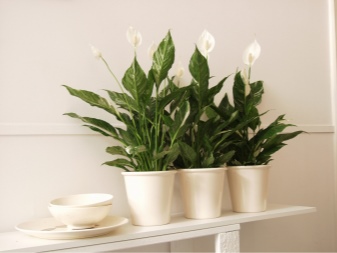
Peculiarities
Laminate and linoleum, electrical appliances, plastic - all this can hardly be called environmentally friendly household items, especially when it comes to budget choices. Experts warn about traces of formaldehyde in finishing materials, and society is actively listening to their recommendations. Today it is considered more reasonable to restore grandma's sideboard or oak table than to buy a new, cheap piece of furniture.
Flowers and plants become one of the main natural inclusions of modern interiors. They create a natural decor that is vibrant and changing.
Any color scheme can be revived by ficuses and dracaena, citrus fruits and chlorophytums. And this is not only beautiful, but also useful.

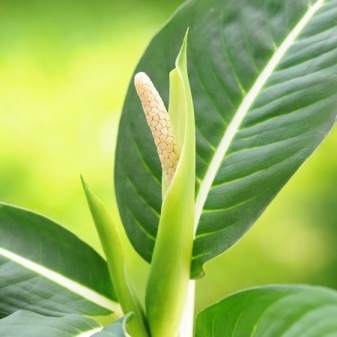
Let's take a look at why indoor plants are so good for your home.
- Residents of metropolitan areas cannot rely only on airing the apartment. The air outside the window is saturated with exhaust gases and industrial emissions. Many plants are capable of absorbing harmful substances and even releasing phytoncides that kill microbes.
- In an average apartment there are many devices that emit electromagnetic radiation: a computer, microwave oven, TV, mobile, etc. Long-term exposure to radiation, of course, affects the well-being of the household. Headaches, insomnia, fatigue - this often manifests itself in this way. Air-purifying plants do an excellent job with this problem. At least some of the electromagnetic radiation is absorbed by the home garden.
- In winter, radiators dry the air. People see the consequence of this on the condition of the skin, on dry mucous membranes. Houseplants purify the air.
- In a home with smokers, plants are also appropriate. They help clean the air not only from dust and toxins, but also from tobacco smoke.
- The phytoncidal properties of plants are underestimated by those who prefer artificial analogs to live flowers. Yes, the latter can be quite decorative, but they do not stand out at all. And, in fact, they only collect dust.
Finally, the vegetation in the house does not require large care costs: neither financial nor temporary. Even very busy people will not be burdened with it.


Review of effective species
Almost all indoor plants can clean the air. But there are also purifiers among them, the characteristics of which are impressive. These are real champions in the plant family, which moisturize and purify the air, and demonstrate outstanding phytoncidal properties.
Chlorophytum
Not only apartments, but also offices have noticed this plant long ago. An evergreen herbaceous perennial is hard not to recognize: its aerial part is a lot of thin, elongated leaves, the bright green color of which is separated by a white stripe... The main property of chlorophytum is its detrimental effect on formaldehydes. He absorbs them from the air. And in return, the long-leaved handsome man releases useful oxygen.
Unfortunately, the plant cannot be called particularly popular: unkempt chlorophytum on the windowsills of clinics and public buildings usually deserves not the most pleasant characteristics. In a cozy home environment, this unpretentious plant looks completely different.
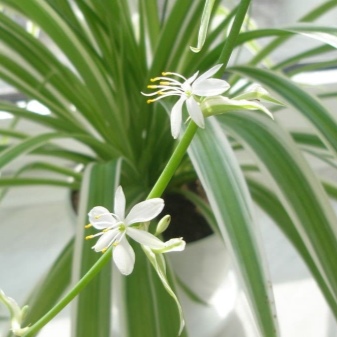

Chlorophytum is easy to care for.
- He prefers temperate climate (+ 20-25 degrees). He does not like frost, but he will calmly survive a short-term cold snap.
- He loves moisture, so you should not forget about watering. But you should water less often in winter. The root system of the plant is sensitive to moisture, especially in winter and in a cool room.
- Loves diffused light thanks to him, the leaves become bright and fresh.
- The plant needs a pot that is not very deep, but wide - the roots should not be cramped.
Chlorophytum retains its healing properties throughout the entire life cycle, but they are maximally manifested in an adult plant.


Spathiphyllum
A useful, beautiful plant with pointed leaves. During the flowering period, buds form on its stems, from which delicate white or pinkish flowers soon appear. In shape, these flowers resemble a heart, which is why lovers often give this plant to each other.
Spathiphyllum care involves:
- moderately warm climate in the apartment, protection from drafts;
- loose soil with dry river sand;
- not too abundant watering, but regular soil moisture;
- sunlight, although even in a shaded area of the home, spathiphyllum can grow well.
The plant is unique in that it resists the harmful effects of mold, formaldehyde, trichlorethylene and other toxic elements. It can live anywhere except in the kitchen: it is dangerous for it to be there due to temperature changes.


Aloe
Fashion comes and goes, but aloe remains a top plant. Its gruel makes hair grow quickly and helps with baldness, and it also heals wounds, promotes rapid regeneration. But the medicinal plant is useful not only for this. Its bactericidal properties help it purify the air from germs. You can also use aloe as a remedy for toxic secretions.
What aloe requires:
- a lot of sunlight, in winter he may need additional lighting;
- infrequent watering, but regular wiping of the fleshy leaves with a moistened clean cloth;
- well-drained soil: it would be nice to add humus, river sand, charcoal and crushed brick to a pot with earth.
But aloe does not impose any requirements on the temperature: the plant develops well both at room rates and in the cool. Unpretentious, modest, but incredibly useful creation will fit into almost any interior.


Ficus Benjamin
A strong trunk with delicate bark, thin branches and quivering leaves - this small tree is found at home and in the office, and in other public buildings. A well-groomed plant looks great, decorates the interior, looks like a self-sufficient natural decor. It perfectly cleans the air from dust accumulated in it. And ficus also resists harmful compounds that plastic produces.
How to care for ficus:
- you do not need to move it often: determine the tree in a permanent place, and do not change it, otherwise the ficus can shed its foliage against the background of stress;
- the optimum temperature for a plant is +20 and a little more, the ficus is afraid of drafts and sudden temperature jumps;
- the plant loves the sun, but does not tolerate direct sunlight;
- you need to water it 1 or 2 times a week, only with warm water.
An attractive, large, yet graceful plant most often decorates the living room.


Dracaena
It is also called a false palm. Low-growing varieties of this plant take root best at home. If you have a busy road or parking lot under your window, start a dracaena - it cleans the air from exhaust gases.
Dracaena care:
- dracaena loves moisture, therefore you need to water it three times a week, wipe the leaves with a damp cloth;
- tolerates any temperature - from cool to standard room temperature, but does not like heat;
- the variegated leaves of the plant indicate that it is better to place it in a more illuminated part of the apartment (if you put the dracaena in a dark corner, its beautiful color will fade);
- it is recommended to feed the plant once a year, in spring.
Dracaena looks good in the living room and bedroom, do not place it in the hallway and kitchen.


Dieffenbachia
And this plant will appeal to those who love large green natural decor in the interior. Dense green stems, large shiny leaves with a spotted pattern - the plant is really noticeable, self-sufficient in terms of decor. Dieffenbachia is notable for the fact that it destroys staphylococci, various chemical compounds (in the composition of paints and varnishes). Important: with all the positive properties, dieffenbachia is a potentially dangerous plant, as it can secrete poisonous juice. It is dangerous for children and animals who cannot warn themselves. The juice causes burns to the mucous membranes and can even lead to blindness.
The plant is unpretentious in care: Moderate watering, maintaining standard room temperature. It tolerates a drop in humidity, so if dieffenbachia stands next to a radiator, it will not worsen its growth.
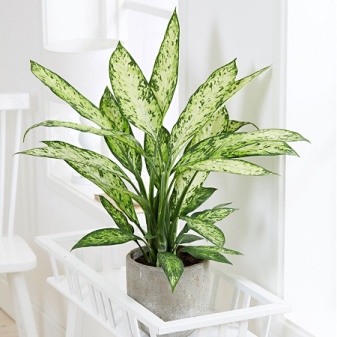

Citrus
Probably, many have tried to grow tangerine or lemon at home. And such an activity can be successful in a certain way. Even if your tree only grows up to 1.5 m, it will be very beautiful. Under certain circumstances, citrus fruits can even bear fruit. They perfectly clean the air in the apartment from bacteria, they are called natural disinfectants. They will also become natural aromatherapy at home.
Care requirements:
- citrus fruits need a deep and roomy flowerpot, and once every 1-2 years the tree will have to be transplanted;
- watering citrus fruits require moderate;
- do not place the plant near heating radiators;
- light-loving citrus is good in full lighting, but it is also impossible to say that they are afraid of dark places.
The lemon tree is often grown in the nursery, but on condition that the owners of the nursery are already at an age when they themselves can water the tree, take care of it with their parents. It will be very interesting for the children to observe the process of lemon growth.
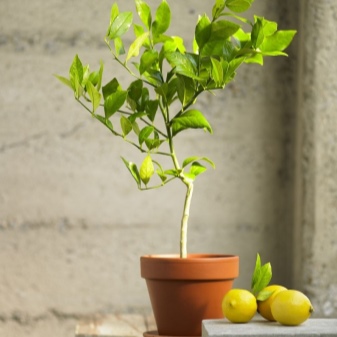
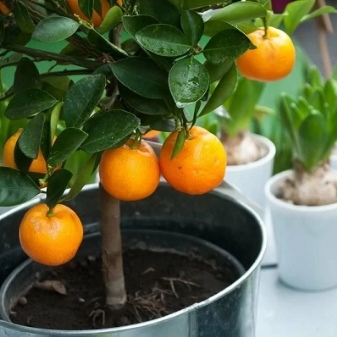
How many plants do you need to clean?
There is a simple calculation rule: for every 5 square meters of a room, there is one medium-sized flower. All calculations will still be approximate, therefore, when purchasing plants, evaluate both your own capabilities (you need to pay attention to everyone), and the conditions of the neighborhood (not all plants get along with each other), and their harmonious inclusion in the design of the room.


Recommendations for owners
If plants from the above list are already decorating your home, take a closer look at more exotic options. For example, laurel would be an excellent purchase... It also releases substances that fight germs. And laurel also has an excellent effect on human lungs, protects our body from respiratory pathologies. It will be useful for the lungs to have asparagus at home. People often call it "herringbone". And myrtle (very cute, by the way) helps with respiratory diseases and even relieves asthma attacks. True, you should not get carried away with such plants either, you do not need to move everything from the list home. At high concentrations, the pronounced aroma of the plants can lead to headaches.
It remains only to think over the decorative scheme: plants can decorate not only window sills, but also shelves, racks, modular walls, cabinets and dressers. And at the same time create incredibly attractive, harmonious combinations.



For information on which indoor plants are the best for purifying the air, see the next video.































The comment was sent successfully.